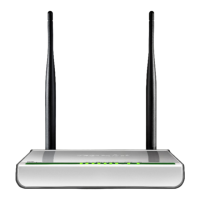ADSL2/2+ Router
- 131 -
A: 1) The walls in the house are main obstacles. Because wireless LAN
adopts wireless microwave frequency range, the signals received by
wireless receiving devices behind the obstacles will be rather weak.
2) Physical obstacles not only hold up the wireless signals but also
absorb the electromagnetic power.
3) The working frequency range of IEEE802.11b/g standard is 2.4GHz,
but other electrical devices are also working in this frequency such as
microwave oven, Bluetooth device, wireless telephone and refrigerator,
etc. If there are strong magnetic fields beside, wireless network will be
affected.
4) If there are multiple wireless devices in wireless environment,
channel conflict and wireless signal interference may occur.
5) The strong signal interference resources such as wireless
transmission tower, electric welding machine, electric car or electric
transformer may disturb the wireless signals or devices.
6) The weather may affect the outdoor wireless signals greatly. The
signals attenuate sharply in lightning storm or gloomy weather.
However, the signals in sunny weather can transmit farther.
Q: How can I improve signal-transmitting quality?
A: 1) Choose a proper place for wireless Router. The requirements are
as follows:
1. The place should be high enough for the Router to transmit the
signals widely, thus the obstacles and dead spots will be greatly
reduced.
2. When you choose the place to set the Router, make sure that the
signals pass through fewer walls.

